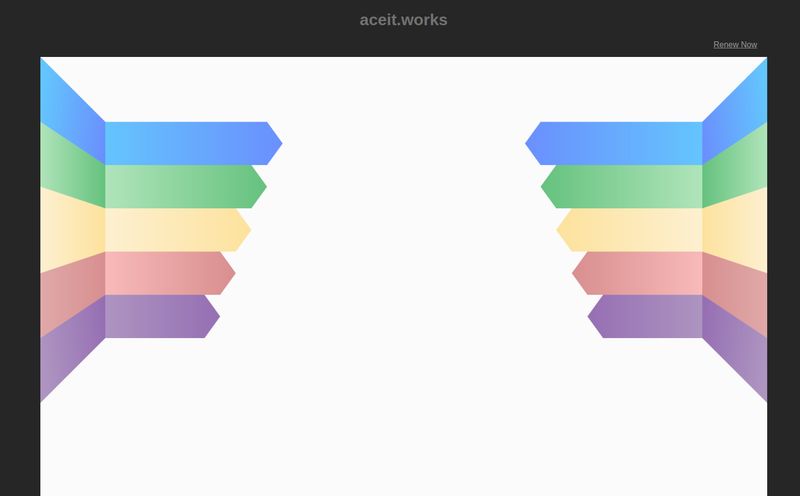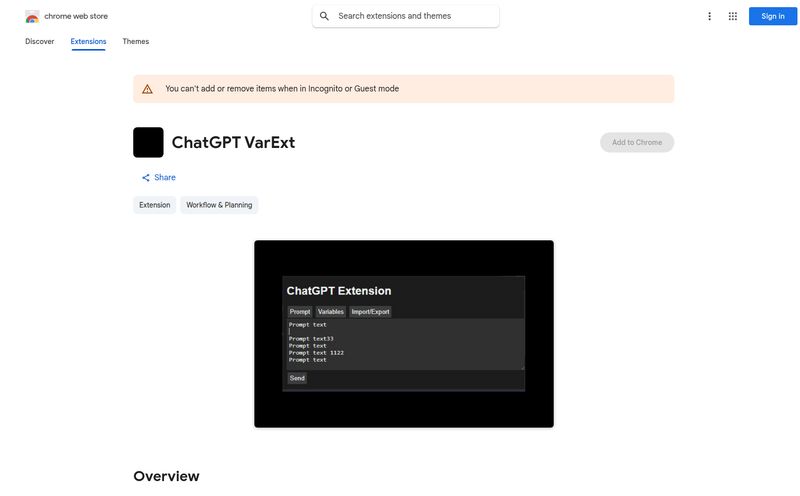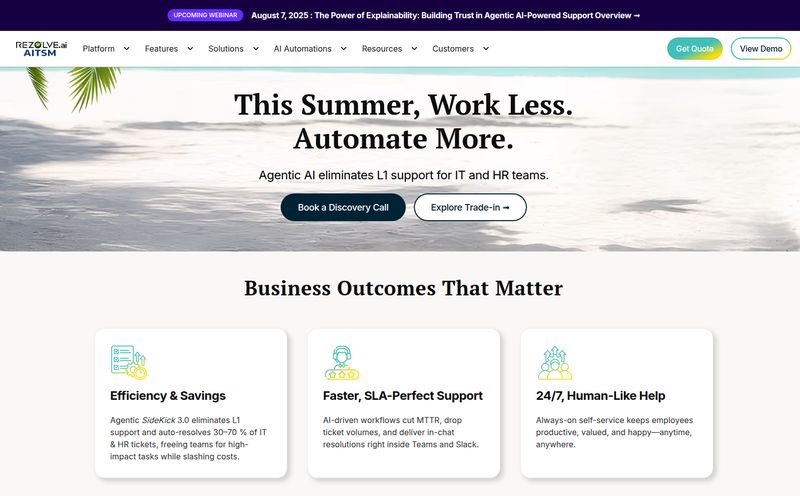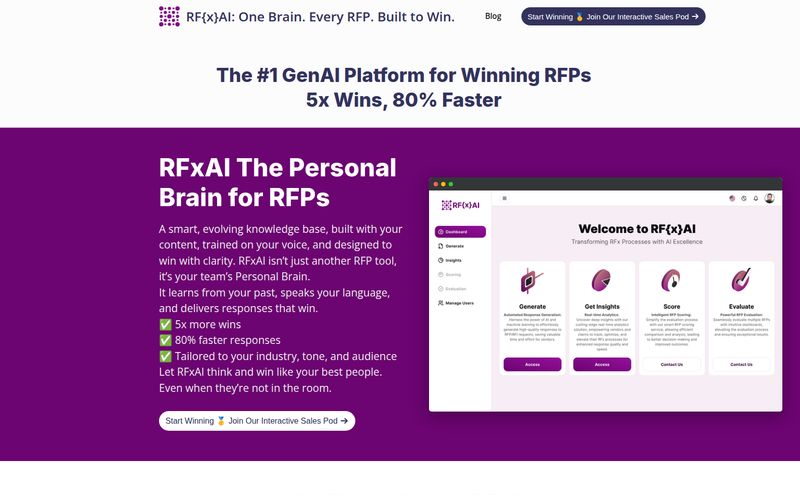If you’re a developer, you’ve probably had moments where the thought of writing another unit test made you want to just close the laptop and go for a long, long walk. It’s the broccoli of the software development world; we all know it's good for us, essential for healthy code, but man, it can be a real grind. And for my friends in QA, the endless cycle of documenting bugs and building out automation scripts can feel like running on a hamster wheel.
For years, we've just accepted this as the cost of doing business. But now, AI is barging into every corner of our industry, promising to take the grunt work out of our work. I've been in the SEO and tech space long enough to see a dozen 'next big things' fizzle out. So when I see a tool like PrimeAI pop up, with its bold tagline of “Faster QA, Smarter Solutions,” my professional curiosity—and a healthy dose of skepticism—kicks in. Is this just another drop in the AI hype bucket, or is there something genuinely useful here for teams on the ground?
I decided to take a look under the hood.
So, What Exactly is PrimeAI Anyway?
At its core, PrimeAI isn't trying to be your all-in-one development environment or replace your entire team. Thank goodness. Instead, it positions itself as a specialized assistant, an AI-powered intern that’s really, really good at a few specific, often tedious, tasks. It’s built to help developers and QA teams clear their plates of monotonous work so they can focus on the tricky stuff—the things that actually require human brainpower.
The platform is built on three main pillars:
- AI-Driven Unit Test Case Generation: You feed it your code, and it spits out unit test cases. The goal here is speed and coverage, getting that initial boilerplate done in seconds, not hours.
- Automated Bug Report Creation: This one’s for the QA folks. It helps generate more detailed and standardized bug reports, which means less back-and-forth with developers trying to decipher what “the button is broken” actually means.
- Fast Selenium Script Generation: For the automation engineers, this is a big one. It can take your test cases and generate the corresponding Selenium scripts, giving you a massive head start on building out your automated testing suites.
Think of it less like a self-driving car and more like an advanced cruise control for your development pipeline. It keeps things moving at a steady clip, handling the straightforward stretches of road so you can stay alert for the sharp turns and unexpected obstacles.
The Big Squeeze: Where PrimeAI Actually Saves You Time
Okay, the feature list sounds nice. But where does the rubber meet the road? As someone obsessed with traffic and conversions, I’m always thinking about efficiency and ROI. Time is money, and any tool that claims to save it better deliver.
Cutting Down the Unit Test Monotony
I’ve worked with dev teams where the sprint velocity gets absolutely crushed by the weight of writing tests. It's a drag. PrimeAI’s value proposition here is simple: automate the boring part. You’re not handing over the keys to the kingdom; you're just letting the AI draft the initial test structure. A senior developer still needs to review it, tweak it, and add the complex edge-case logic that an AI might miss. But not having to write `Assert.AreEqual(expected, actual)` for the hundredth time in a day? That’s a real quality-of-life improvement, and it frees up expensive developer time for feature development.
Crafting Bug Reports That Don't Suck
We’ve all seen them. The one-line bug reports. The vague descriptions. It’s a communication nightmare that leads to wasted cycles. I find PrimeAI’s angle on this interesting. By using AI to structure the report, you enforce a certain level of quality and detail. It can prompt for the right information—steps to reproduce, expected vs. actual results, environment details. This isn’t about replacing the tester's observation skills; it’s about packaging those observations in a way that’s immediately actionable for a developer. It’s a translator, turning human frustration into a clear technical brief.
Accelerating Your Selenium Game
Anyone who's written Selenium scripts from scratch knows it can be a finicky process. Getting all the selectors right, handling waits, structuring the code… it takes time. PrimeAI's ability to generate these scripts from test cases is probably its most powerful feature for QA automation teams. It won't create a perfect, production-ready framework for you, but it can generate 70-80% of the script, leaving the engineer to refine and integrate it. That’s a huge reduction in manual effort.

Visit PrimeAI
Let's Talk Money: The PrimeAI Pricing Tiers
This is where a lot of new tools get it wrong, but I have to say, PrimeAI’s model is pretty smart. They offer a clear path from trying to buying, which I appreciate. There's no shady “contact us for a demo” button hiding the price.
| Tier | Price | Key Features |
|---|---|---|
| Free Tier | $0 | Get 10 free tokens to test it out. Or, you can plug in your own OpenAI API key for unlimited use, which is a fantastic option for developers who already have one. |
| Professional Tier | $9.99 | You get 40 tokens that don't expire. This uses their GPT-4 key, so you don't need your own. The token cost is broken down: 1 for a bug report, 2 for a unit test, and 3 for a Selenium test case. |
The free tier is genuinely useful. The fact that you can bring your own API key is a game-changer. It means you can properly integrate it into your workflow and test its limits without a credit card. The professional plan is also reasonably priced, especially for small teams or freelancers where that $10 could save hours of billable work. It’s a low-risk investment.
Okay, But Is It Perfect? The Reality Check
No tool is a silver bullet, and it's important to go in with open eyes. I see a few potential gotchas with a platform like PrimeAI.
The "Garbage In, Garbage Out" Problem
This is the cardinal rule of all AI. The effectiveness of PrimeAI is going to be directly proportional to the quality of your input. If your codebase is a tangled mess of spaghetti code with no clear structure, the AI is going to struggle to generate meaningful tests. It can’t read your mind or fix fundamental architectural problems. You need a reasonably clean codebase to get good results. Full stop.
Don't Turn Off Your Brain
My biggest fear with the proliferation of AI tools is the atrophy of critical thinking. A developer who relies on PrimeAI for 100% of their tests without ever reviewing or understanding the output is a liability. This tool should be seen as a collaborator, a pair programmer. It generates a draft, and the human expert validates, refines, and approves it. The moment you start blindly trusting AI-generated code is the moment you introduce subtle, hard-to-find bugs into your system. Use it to be faster, not to be lazy.
Who is This Tool Really For?
After playing around with it and thinking about its place in the ecosystem, I have a pretty clear picture of the ideal PrimeAI user. This is perfect for indie developers, small-to-medium-sized dev teams, and agile QA departments. These are the groups that feel the pain of resource constraints the most. For them, a tool that can cut down on manual hours for less than the price of a few cups of coffee is a massive win.
I could see this being a godsend for a startup trying to get an MVP out the door with proper test coverage, or for a QA engineer who’s the sole person responsible for setting up a new automation framework. For huge, enterprise-level companies with deeply entrenched (and often rigid) development and testing protocols, adoption might be slower. But for the nimble and the resource-strapped? This could be a huge advantage.
Final Thoughts from a Jaded SEO Guy
"Tools like PrimeAI represent the next logical step in developer tooling. Not a replacement for skill, but a powerful amplifier of it."
So, is PrimeAI worth your time? In my opinion, yes. The existence of the free tier makes trying it out a complete no-brainer. It’s not going to magically solve all your problems, and it requires a mature mindset to use effectively. But as a tool to augment a skilled team, to take the repetitive strain out of the software development lifecycle, it's pretty compelling.
I've seen it's getting some love on Product Hunt, and the community seems to be growing. It feels like we're moving into an era where AI assistants like this, or GitHub Copilot, become standard issue. They are productivity levers. And in a world where speed-to-market and code quality are constantly at odds, any lever you can pull to improve both is worth a serious look.
Frequently Asked Questions about PrimeAI
1. How does PrimeAI's token system work?
In the Professional Tier, you buy tokens. Different actions cost a different number of tokens: 1 token for a bug report, 2 for a unit test, and 3 for a Selenium test case. The tokens don't expire, so you can use them as needed.
2. Can I use PrimeAI for free forever?
Yes, in a way. The free tier gives you 10 tokens to start. After that, you can connect your own OpenAI API key and continue using the platform for free, paying only for what you use through your OpenAI account. This is a great model for continuous evaluation.
3. Is PrimeAI a replacement for QA engineers or developers?
Absolutely not. It’s a tool designed to make them faster and more efficient. It handles the repetitive, boilerplate tasks, but it still requires a skilled human to review the output, handle complex logic, and perform exploratory testing. It augments, it does not replace.
4. What kind of code quality does PrimeAI need to be effective?
The better your code, the better the results. The AI works best with well-structured, clean, and commented code. If your code is confusing and lacks clear patterns, the AI will likely struggle to produce high-quality test cases.
5. Does PrimeAI use my code to train its models?
While you should always read the Terms of Service and Privacy Policy yourself, most services in this space, especially those using OpenAI's API, have policies against training their public models on private user data. Your code is processed to generate the output, but it typically isn't stored or used for training.
6. How does PrimeAI compare to something like GitHub Copilot?
They are complementary. GitHub Copilot is a general-purpose AI pair programmer that helps you write code in real-time, inside your editor. PrimeAI is a more specialized, out-of-editor tool focused specifically on the testing and QA part of the workflow: generating test cases, bug reports, and automation scripts.
Conclusion
The grind of software development and QA isn't going away. But the tools we use to manage that grind are getting smarter. PrimeAI is a sharp, focused tool that tackles a few very specific, very common pain points. It’s not magic, and it demands a partnership with a skilled user to get the most out of it. But for the right team, it offers a tangible way to reclaim time, improve the quality of their work, and ultimately, ship better products faster. And in this business, that’s the name of the game.



